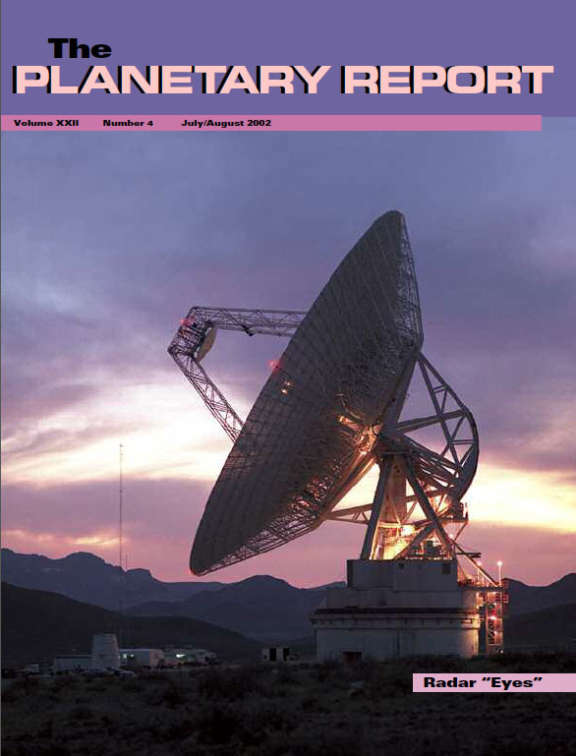The Planetary Report • July/August 2002
Radar "Eyes"
On the Cover: As the Sun dramatically drops from sight in California’s Mojave Desert, Goldstone’s 70-meter antenna stands poised and ready for work. Part of NASA’s Deep Space Network—used to communicate with planetary spacecraft—Goldstone is one of the world’s two primary facilities set up for planetary radar astronomy. Scientists are using radar to peer into the dark regions of our solar system, discovering and tracking potentially hazardous near-Earth asteroids.
Features
4 The Mars Odyssey Continues: Bruce Betts continues his coverage of this mission, examining the Gamma Ray Spectrometer results and updating us on the mission's progress.
8 Extra! Extra! Read All About It: Extrasolar Planets on the Rise! Steve Howell reports on the progress of a exoplanet-hunting program at Kitt Peak National Observatory.
14 Taking the Measure of Microworlds: Robert Burnham reports on the discoveries of radar astronomy when it comes to asteroids.
Departments
3 Members' Dialogue Why explore space? A long-term plan; tribute to Stephen Jay Gould
7 World Watch NASA, JAXA, and ESA mission updates
20 Q&A How do Mars' dust storms go global? What is the hottest planet in the solar system?
22 Society News Honoring Bruce Murray; member names landing on an asteroid
The Planetary Report • July/August 2002
Help advance space science and exploration! Become a member of The Planetary Society and you'll receive the full PDF and print versions of The Planetary Report.


 Explore Worlds
Explore Worlds Find Life
Find Life Defend Earth
Defend Earth


